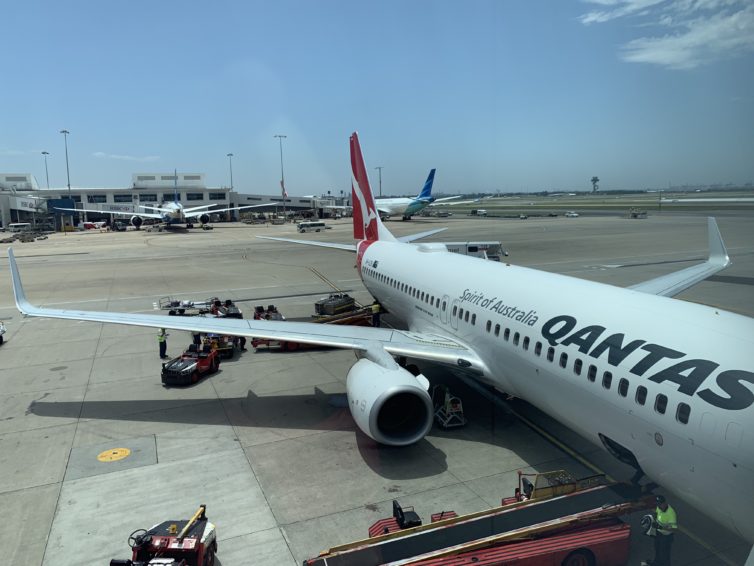
Our Qantas 737-800 awaiting departure – Photo: Colin Cook
As part of a larger trip to Australia and New Zealand, my girlfriend Molly and I recently had the opportunity to fly in multiple cabins across the Qantas international and domestic network. The trip started out with a fantastic experience in their First Class cabin (review coming shortly), followed by flights in Business Class, Premium Economy, and Economy. Today’s story will cover those short-haul flights within Australia and New Zealand.
The Qantas Economy Experience:
All our flights within Australia were operated on either a Boeing 737-800 or an Airbus A330-200, and the economy experience was fairly consistent throughout the flights. On the flights operated by a 737, there was a seat-back entertainment screen, which is always nice. For the flight on the A330, individual iPads were provided. I found the in-flight entertainment on both systems to be quite responsive, and the system had a good amount of content.
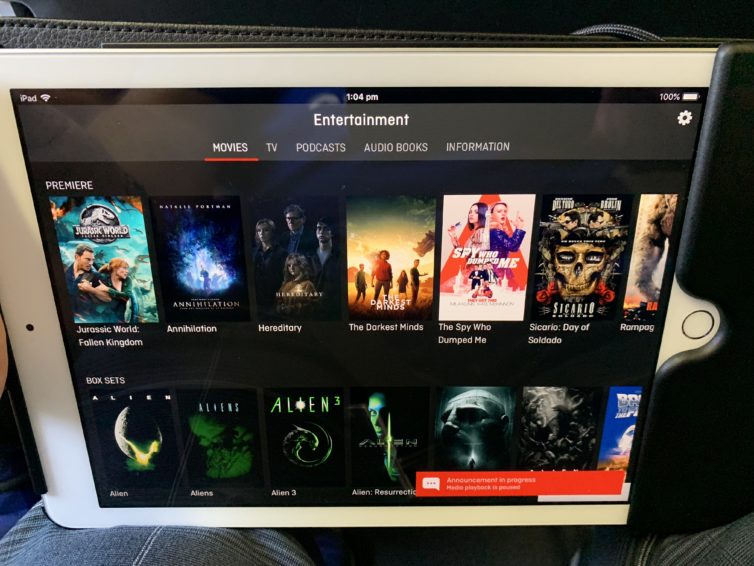
The iPad was loaded with lots of content on the A330 – Photo: Colin Cook
There’s quite a bit of debate around AirlineReporter as to whether it’s sensible to recline your seat. Our fearless leader, David Parker Brown, has stated multiple times that he doesn’t recline while airborne. On our Qantas flights, the whole recline situation was a bit complicated, as the Qantas seats recline a LOT. So if the passenger in front of you reclines, you really have a significant lack of personal space. As a result, if the person in front of you reclines, you pretty much have to recline as well. Thankfully, at meal time, the flight attendants were good about asking passengers to adjust their seat to the upright position.
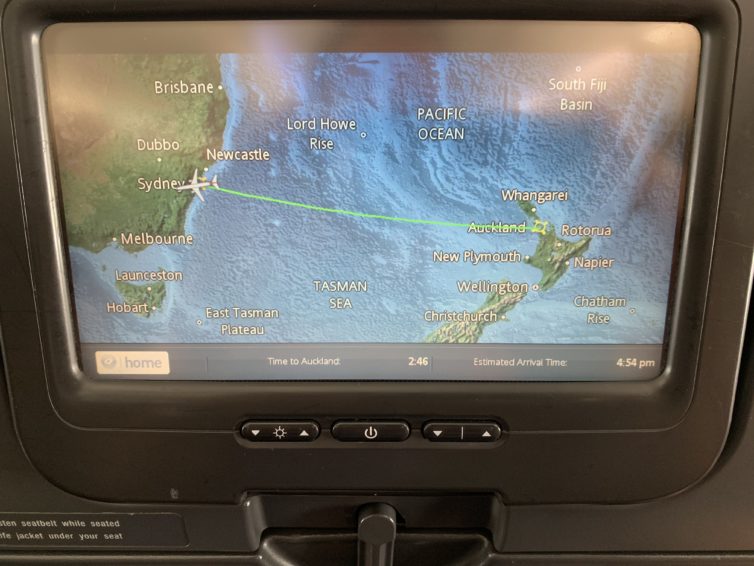
Ready to start our journey from Sydney to Auckland – Photo: Colin Cook
Speaking of meals, Qantas provided meals on all of our flights in coach, which is unheard of on domestic flights within the U.S. these days. The meal on our flight on the A330 from Cairns to Sydney was the blandest of the flights, as it was a chicken and cheese sandwich. On the international flights to New Zealand, Qantas stepped up their game, and provided a choice of delicious lamb curry or a salmon salad. I was surprised that on the domestic flights, Qantas only accepts cash for onboard purchases. Contrast that to the U.S., where all major airlines only accept credit or debit cards.
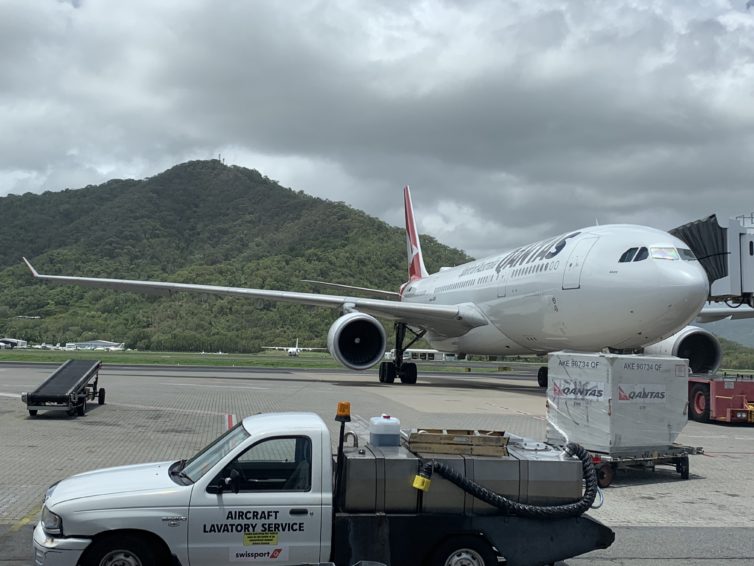
Domestic flight on a wide-body aircraft? Yes please! – Photo: Colin Cook
Another perk of the domestic flights was that Qantas provides free inflight Wi-Fi, which I found to be quite fast. On their homepage, Qantas also has an interactive map that shows you interesting points along your flight. For example, it would highlight areas of historical significance, tourist attractions, and towns along the way. It was a nice touch so that we could learn a little more about the areas we passed.
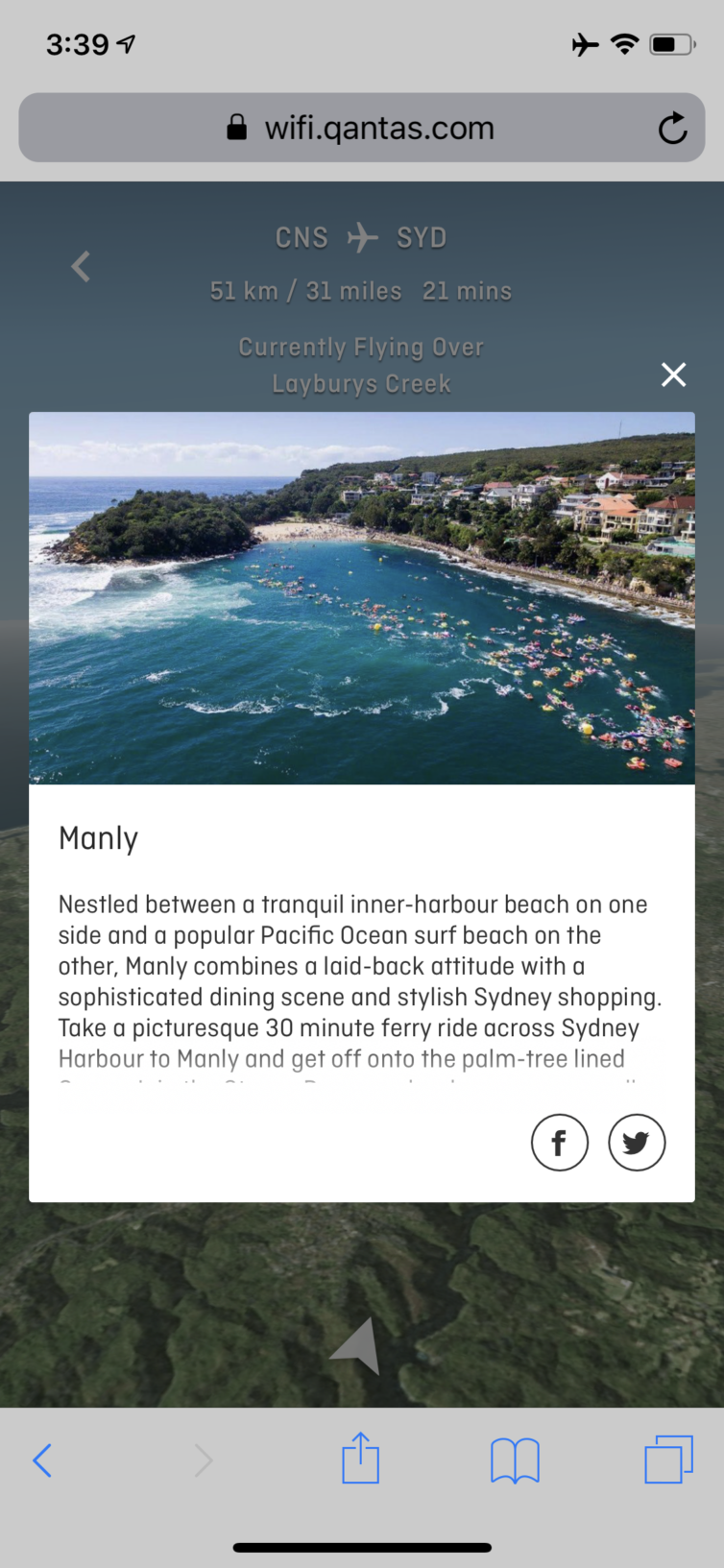
Screenshot from the handy Qantas map showing highlights along the flight – Photo: Colin Cook
Across all our economy flights, we found the flight attendants to be quite personable, attentive, and they seemed to genuinely care about our experience. Surprisingly, the Qantas economy experience proved to be superior to our international Premium Economy flight.
Bonus: Read Jacob’s review of business class on a Qantas A330
The Qantas Premium Economy Experience:
Anytime I get to fly on a 747, I find myself as excited as a kid in a candy store. There’s just something about that beautiful plane that creates a sense of pure joy. Our Premium Economy flight from Sydney to Honolulu was operated by an older 747-400ER that was delivered to Qantas in 2003 (registered VH-OEH). While Qantas generally takes great care of their aircraft, this one was showing its age. The air conditioning vents were leaking, and there were towels in the vents to try to collect some of the condensation.
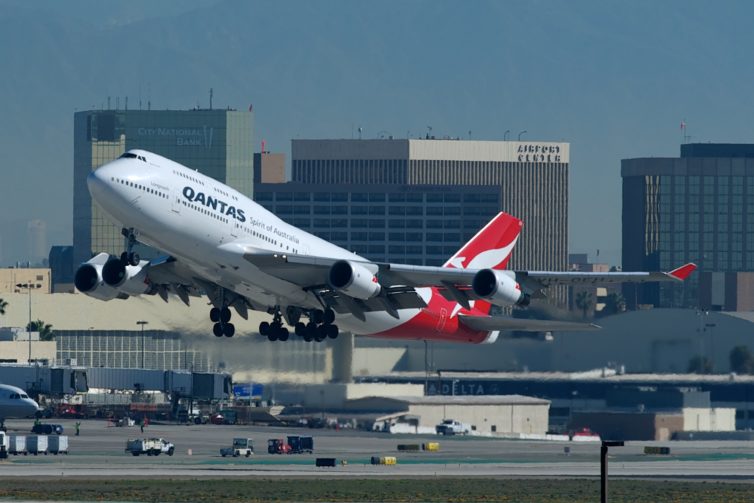
QANTAS Boeing 747-400ER VH-OEH – Photo: BriYYZ Flickr Creative Commons
The Premium Economy cabin is laid out in a 2-4-2 configuration, making the sides ideal for couples travelling together. As with our other Qantas flights, the seats had quite a bit of recline, and our space was limited if the person in front of you reclined. Even though we were in the last row of the Premium Economy cabin, our seats had a generous amount of recline. I found the seat to be somewhat comfortable, but certainly could have used more padding. It was difficult to get comfortable, and my tailbone was a little sore after the flight.
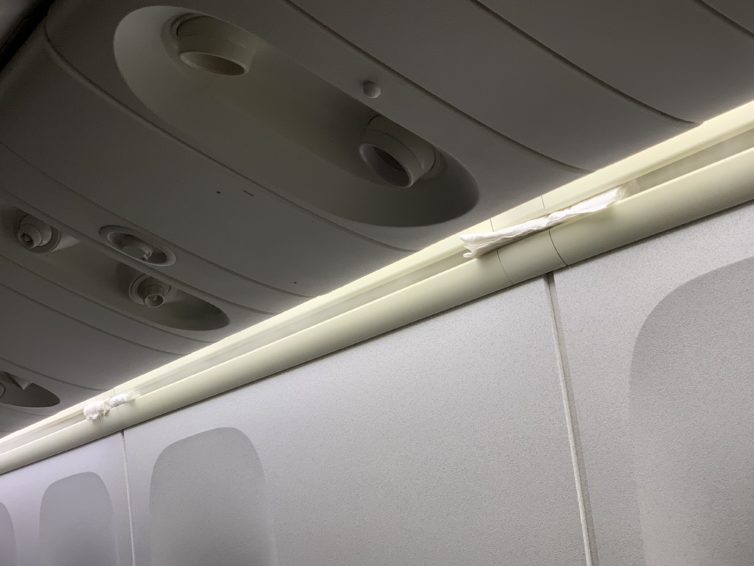
There apparently was an issue with the air conditioning on board – Photo: Colin Cook
Unlike our previous Qantas flights, the flight attendants in our cabin did not live up to the Qantas standard that we had come to expect. The two attendants that served our cabin tended to be a little curt, did not come through the cabin often, and it almost seemed like we were a burden on them. When we needed something, they would oblige, but it was not the most welcoming experience.
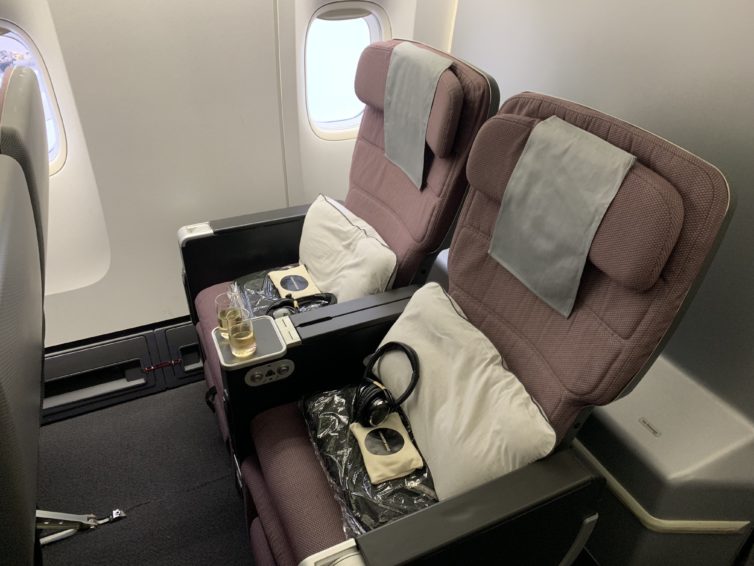
Premium Economy on the Qantas 747-400ER – Photo: Colin Cook
The in-flight entertainment on this flight was pretty similar to the other flights, but the system was noticeably older. I was also rather shocked to learn that our 747 did not have a moving map, nor a map of the journey of any kind. All that was offered was a countdown clock to our arrival. It’s pretty standard these days for the IFE to at least have a basic map, and even the 737 flights had a map. On the bright side, the noise canceling headphones worked well, providing a good listening experience. Qantas handed out a fairly basic amenity kit in Premium Economy, containing the essentials such as a toothbrush, toothpaste, floss, eye mask, and socks.
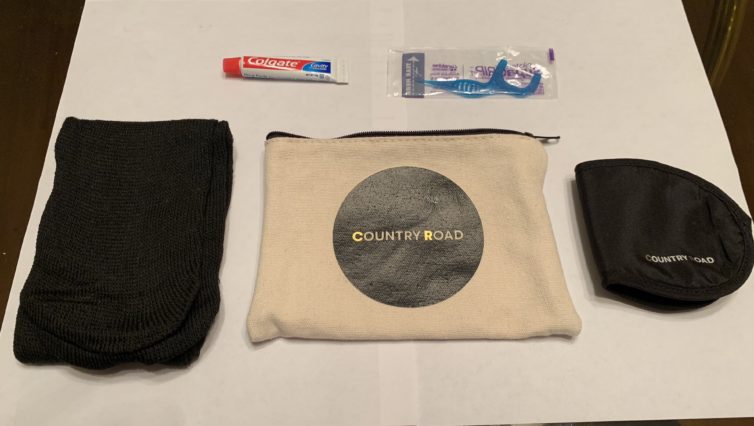
The basic Premium Economy amenity kit – Photo: Colin Cook
The catering on board was pretty average for economy, as we had a choice of beef or chicken. The beef brisket was overdone, which is to be expected, but it came with roast pumpkin and corn cakes which were the highlight of the meal. Molly had the chicken which was also a bit well done and lacked flavor. The meals would be expected for a typical economy flight, and there didn’t seem to be a upgrade in catering for Premium Economy. It was handy that we could pre-order meals prior to our flight.
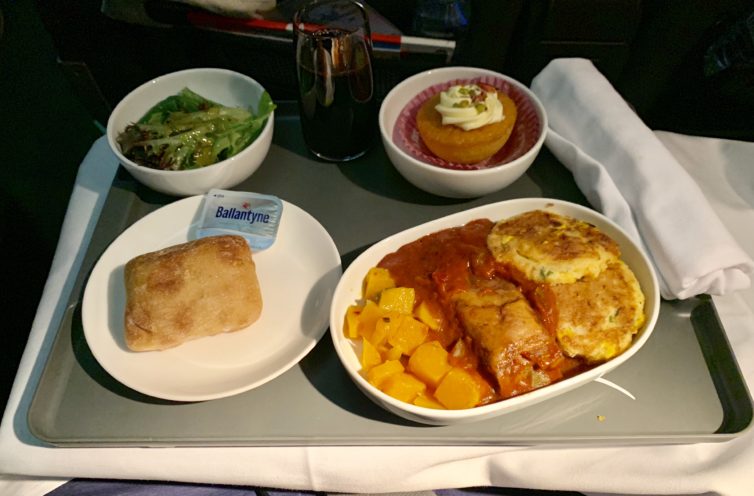
Beef brisket in Premium Economy – Photo: Colin Cook
One other aspect that surprised me in the Premium Economy cabin was that there was only one lavatory for the entire cabin, which seats 36 people. I would have thought there would be at least two lavatories, but no such luck. As a result, there was often a line of people waiting, which is a little subpar for this type of cabin. In addition, it did not appear that the lavatory was serviced at all, as it got dirtier throughout the flight.
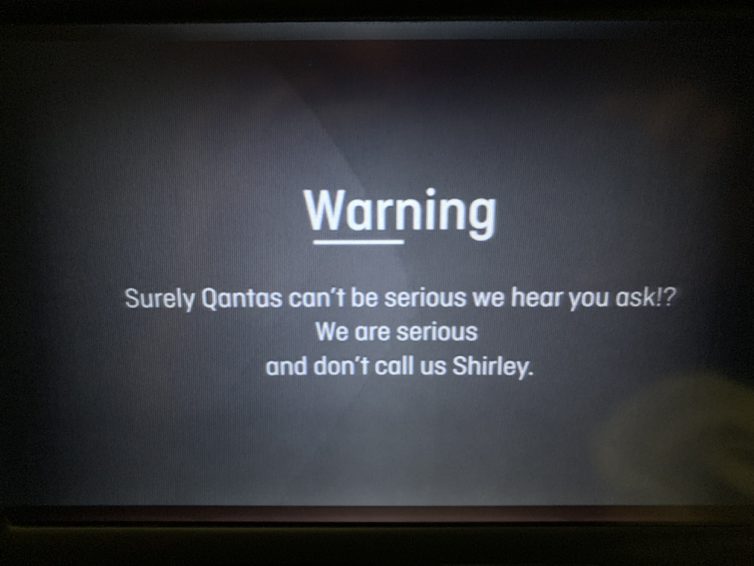
Qantas provided a cheeky warning for those with a fear of flying for the movie Airplane! – Photo: Colin Cook
Overall, I found the Premium Economy experience to be a slight upgrade over economy in terms of personal space, but I’m not sure I would go out of my way to fly it again. It was by no means poor, it just didn’t quite live up to my expectations. While the two seats together made it ideal for us to travel as a couple, the lack of padding in the seat, combined with the mediocre cabin service, resulted in a very blas experience.
Bonus: Flying First Class on a British Airways 747
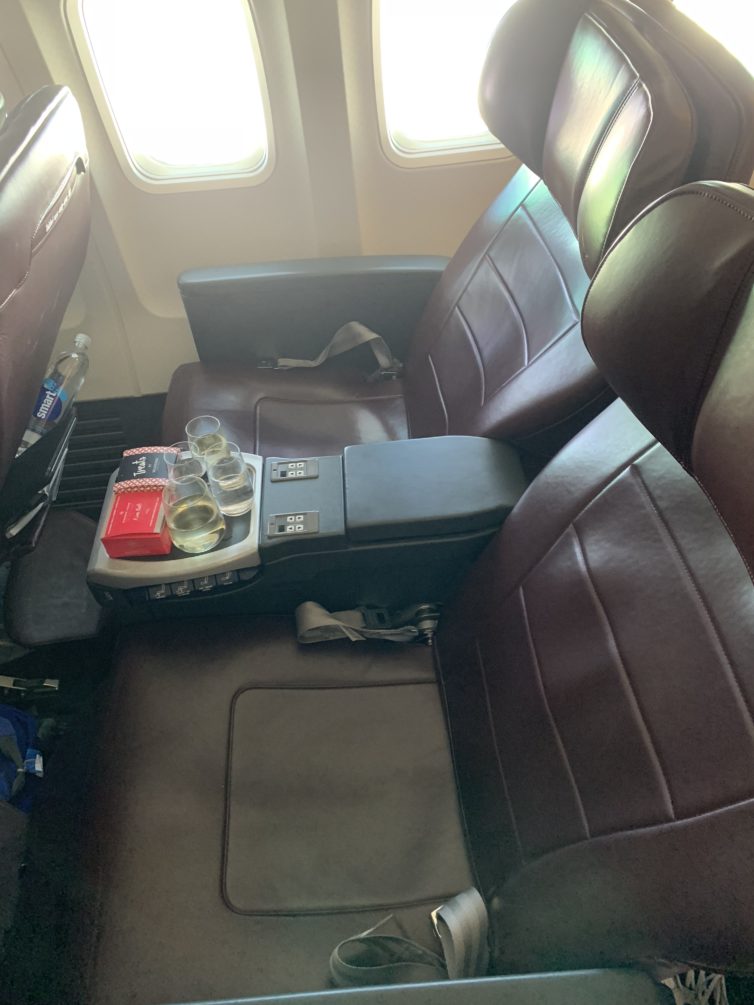
While dated, the Business Class cabin was comfy – Photo: Colin Cook
The Qantas Business Class Experience:
Our lone flight in Business Class was operated by an older 737-800, having been delivered in 2004 (registration VH-VYC). The plane was a little worse for wear on the inside, but that was more than made up by the fantastic flight attendant. The FA was very attentive, and my glass of wine was never empty during the three-hour flight.
As with the other Qantas flights, your personal space gets a little tight when the person in front of you leans back. The seats were similar to ones you would find on a domestic first class flight here in the U.S. and made for a comfortable flight overall. One aspect I would like to see U.S. airlines adopt from Qantas is the footrest that extends from the front of the seat. The only downside here is that the seat controls were a little tough to operate, as you had to push the buttons hard and lean on the seat in order to get it to work.
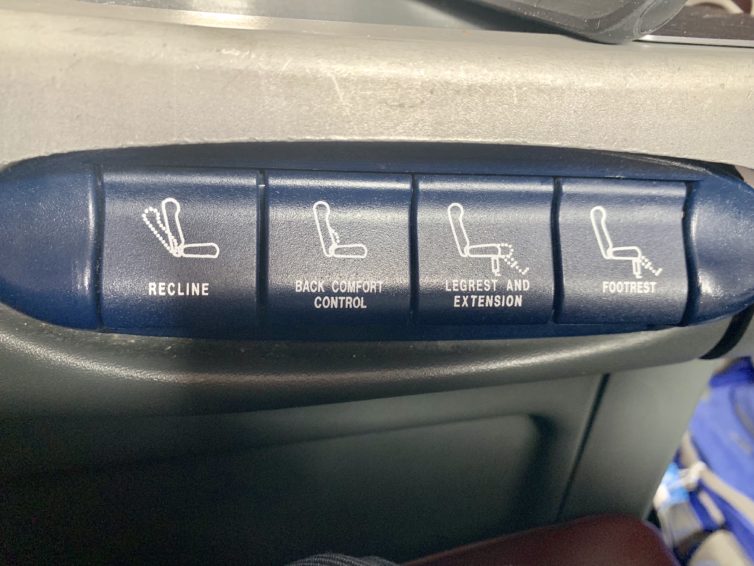
Seat controls in Business Class – Photo: Colin Cook
Once we settled in, the flight attendant came through taking lunch orders. I went with roast beef salad with broccoli and other tasty veggies, which I found to be light and tasty. Molly ordered the chicken, which was good but a bit dry. The ’œtreats’ and ’œrum balls’ provided had good flavor and helped wrap up the meal nicely.
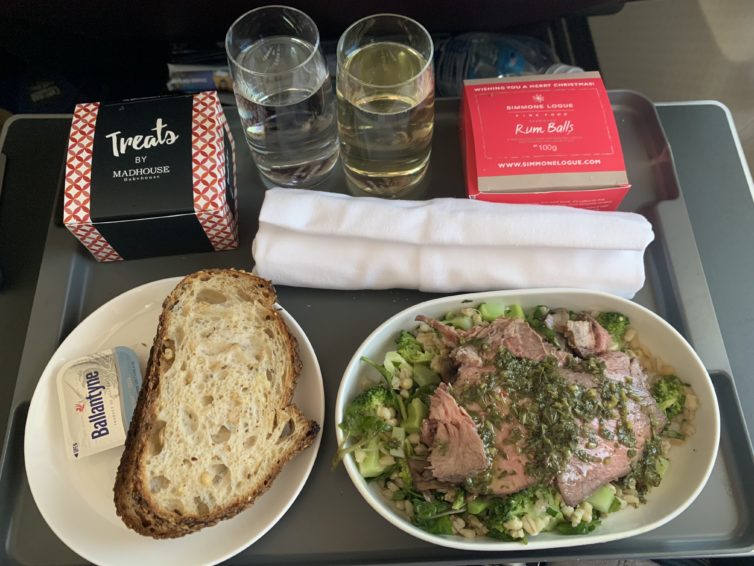
Roast beef salad in Business Class – Photo: Colin Cook
The Business Class experience on Qantas was as expected for our domestic flight, and on-par for what we see in the typical U.S. domestic first class cabin. It was easily an upgrade over economy and helped us arrive feeling great after a pleasant flight.
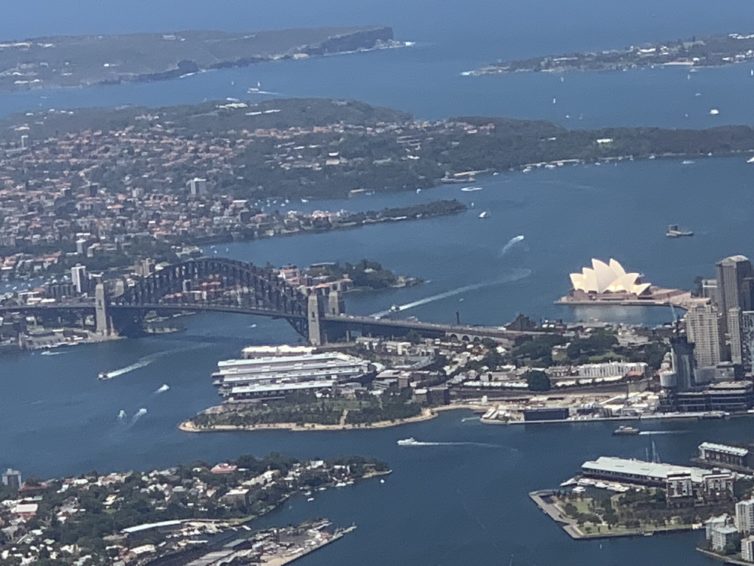
Beautiful view of Sydney Harbour on departure from SYD – Photo: Colin Cook
My Qantas Conclusion:
It was fun to compare the Qantas economy, Premium Economy, and business class cabins. I initially thought the Premium Economy cabin on the 747 would be my favorite, but that cabin was the worst of the three. It’s unfortunate to say that even the domestic economy cabin was an upgrade over their Premium Economy.
The majority of the five flights taken were all enjoyable, each with their ups and downs. Overall, the hard and soft product on Qantas was great, and most of the flight attendants were polite and helpful.
Stay tuned for part two of our story, where we review the Qantas First Class product on an Airbus A380.
Personally, I have found that QF domestic flights are far superior to their long haul int’l flights when manned by SYD based cabin crew, especially in First. It wasn’t always that way, but over the years it has become the norm. I haven’t had the chance to fly QF between SYD and LHR since they moved the connection back to SIN, but I will say that previous flights between SIN and LHR staffed with a London based crew were consistently excellent, especially when compared to the SYD – SIN leg which were mediocre at best.
Cabin service between Australia and New Zealand will depend on the type of aircraft you fly. Qantas now uses A330s (200s and 300s) between AKL and SYD, BNE and MEL (after EK exited trans-Tasman services) and these are staffed by Australian-based mainline crew but still uses its 737-800s with mostly New Zealand based crew from WLG, CHC and ZQN. The A330s have the new suite business class product and are good.
I travelled on a QF A380 recently and noted that their Premium Economy seats were showing a lot of wear and tear. QF has indicated that these and the very dated Skybeds will be replaced with their newer product seen on its 787s and this will be done towards the latter part of this year. The aircon “issue” on the 747-400s has been known for years and I ended up getting quite a deluge upon takeoff out of Singapore some years ago. While it will be a sad day when they retire the remaining fleet in 2020, they have reached their use-by date, in my opinion.
Not quite true. There are multiple flights between AKL and SYD, MEL and BNE each day.
SYD-AKL-SYD – There are five daily flights each way- 3-4 daily flights operate on a 737-800; 1-2 daily flights operate on a 330-200. (Depending on season – in the Southern Hemisphere summer, QF operate AKL-PER-AKL non-stop and so a second 330-200 operates SYD-AKL-SYD in that season, as PER is too far away to operate on a 737.
MEL-AKL-MEL – There are three daily flights each way – 2 daily flights operate on a 737-800; 1 daily flight operates on a 330-200.
BNE-AKL-BNE – There are two-three daily flights each way depending on season. 1 of those operates with a 330-200, with others operating with a 737-800.
We flew Business Class from Auckland to Sydney on a Qantas 737 800. It was old and rattled. Not sure that there was anyone on the flight deck as not a word from them for the whole of the flight. No welcome, no comment during the flight and nothing about our arrival time, Sydney weather etc. The cabin crew, who were obviously local crew from Auckland, were very nice but no chat or very much interaction at all. Forgot my Wife”s desert and didn”t offer Coffee or tea. The lunch meal was mediocre and not much better than other airline economy. Only one type of bread offered and bland Cauliflower Soup poured from a Thermos as an entree plus a pack of Pretzels. Also, the cabin crew allowed queuing at the one business class toilet by economy class passengers making it quite inconvenient for those in Business Class.
Overall, not worth the cost!